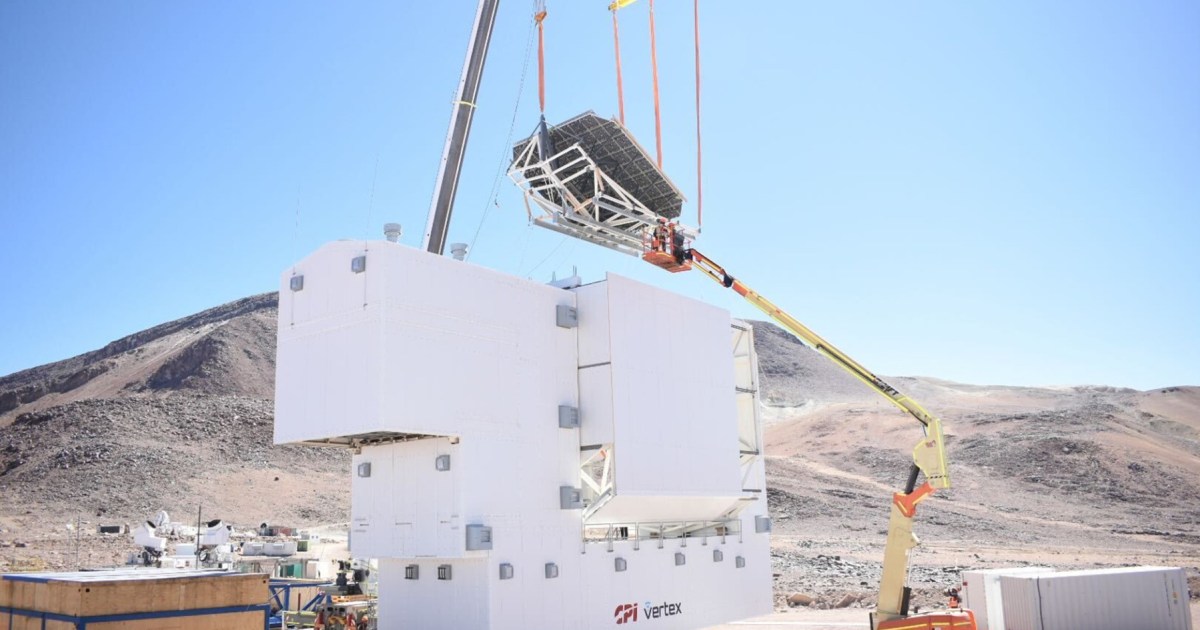Skip to content
The relic signal that first proved the Big Bang has been known and analyzed for 60 years. Join us at the frontiers of modern cosmology!
This image shows the Large Aperture Telescope’s colossal, 6-meter primary and secondary mirrors at the Simons Observatory in February of 2025. The telescope has already seen first light, and will soon begin delivering new CMB science as never before.
Key Takeaways
-
Many different alternative ideas about our cosmic origins abounded until the mid-1960s, when the discovery of the CMB, identified as the Big Bang’s leftover glow, was first identified. -
In all that time since, observations have confirmed and strengthened this picture, while subsequent CMB analysis has revealed even more information about our primeval Universe. -
Many think that the story of the CMB ended with Planck, but the past 10 years have shown that so much more remains to be discovered. Come join us on the frontiers in this fascinating CMB-focused podcast episode!
Sign up for the Starts With a Bang newsletter
Travel the universe with Dr. Ethan Siegel as he answers the biggest questions of all.
Perhaps the strongest evidence we’ve ever acquired in support of the Big Bang has been the discovery of the leftover radiation from its early, hot, dense state: today’s cosmic microwave background, or CMB. While there were many competing ideas for our cosmic origins, only the Big Bang predicted a uniform, omnidirectional bath of blackbody radiation: exactly what the CMB is.
But it turns out the CMB encodes much more information than just our cosmic origins; it allows us to map the very early Universe from when it was just 380,000 years old, and gives us vital information about what has happened to light from that time over its 13.8 billion year journey to our eyes. It encodes information about our cosmic expansion history, about dark matter and dark energy, about intervening galaxy clusters, and about the material here in our own galaxy, along with much more. It is, arguably, the richest source of information from any one single observable in our entire Universe.
Here to guide us through what CMB scientists are working on here in 2025, including what we’ve learned and what we’re still trying to find out, I’m so pleased to welcome Dr. Patricio Gallardo to the show. We’ve got more than an hour and a half of quality science to go through, and by the end, I bet you’ll be more excited about the upcoming Simons Observatory, designed to measure the CMB to higher precision than ever before, than you knew you should be. Enjoy!
Sign up for the Starts With a Bang newsletter
Travel the universe with Dr. Ethan Siegel as he answers the biggest questions of all.
The CMB has long been considered the Big Bang’s “smoking gun” evidence. But after what JWST saw, might it come from early galaxies instead?
Originally, the abundance of bright, early galaxies shocked astronomers. After 3 years of JWST, we now know what’s really going on.
For over 50 years, it’s been the scientifically accepted theory describing the origin of the Universe. It’s time we all learned its truths.
If you want to understand the Universe, cosmologically, you just can’t do it without the Friedmann equation. With it, the cosmos is yours.
The hunt for extraterrestrial life begins with planets like Earth. But our inhabited Earth once looked very different than Earth does today.
The CMB has long been considered the Big Bang’s “smoking gun” evidence. But after what JWST saw, might it come from early galaxies instead?
